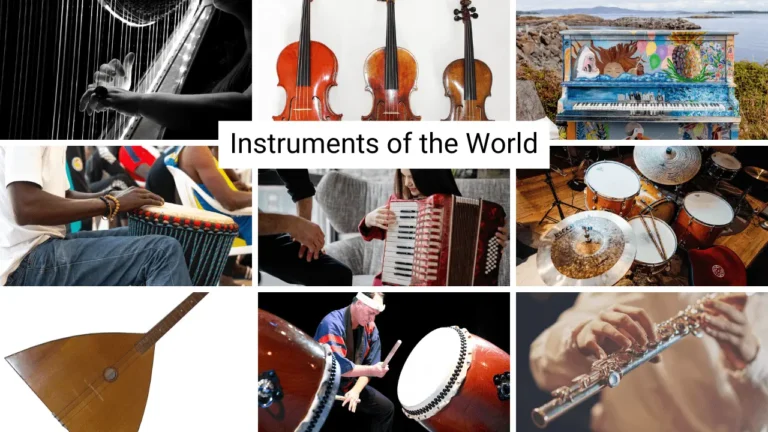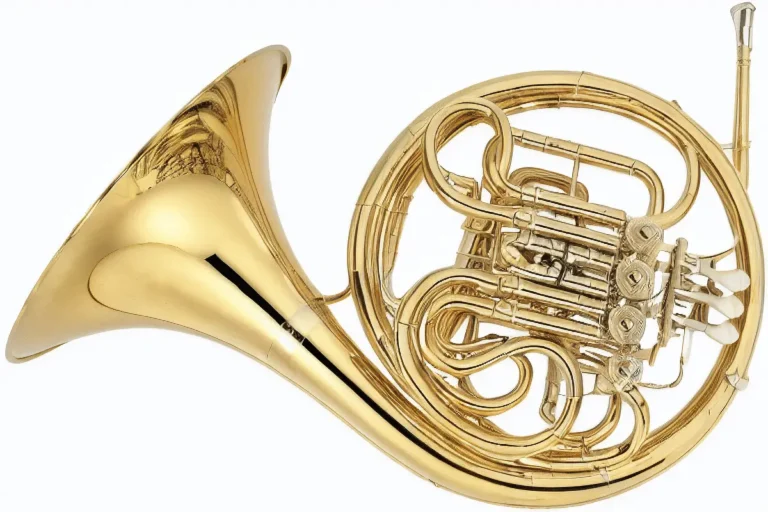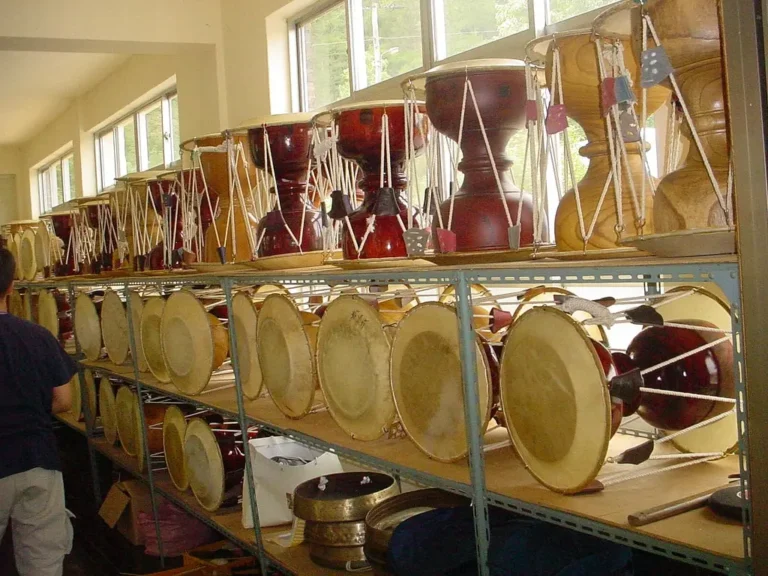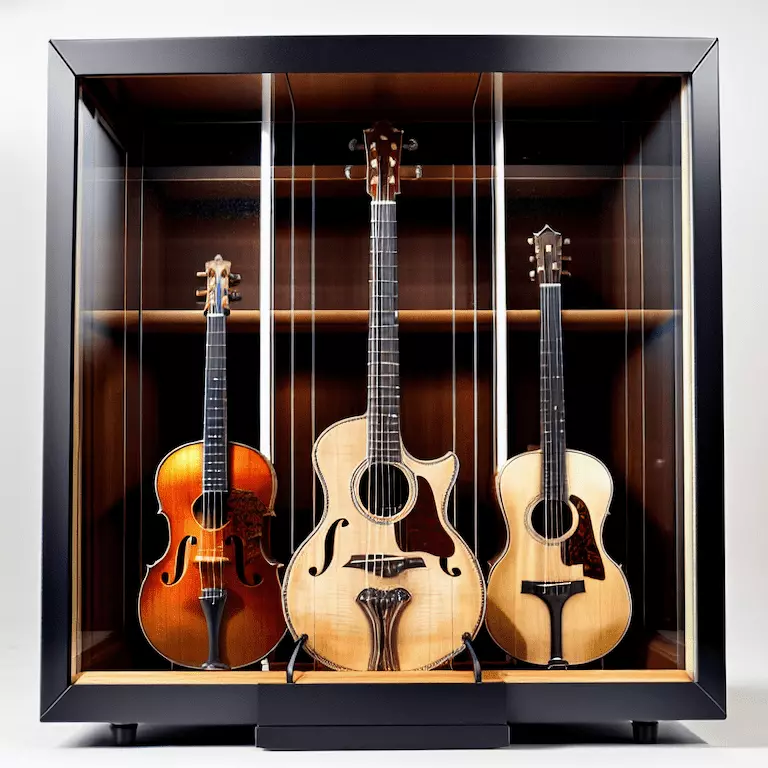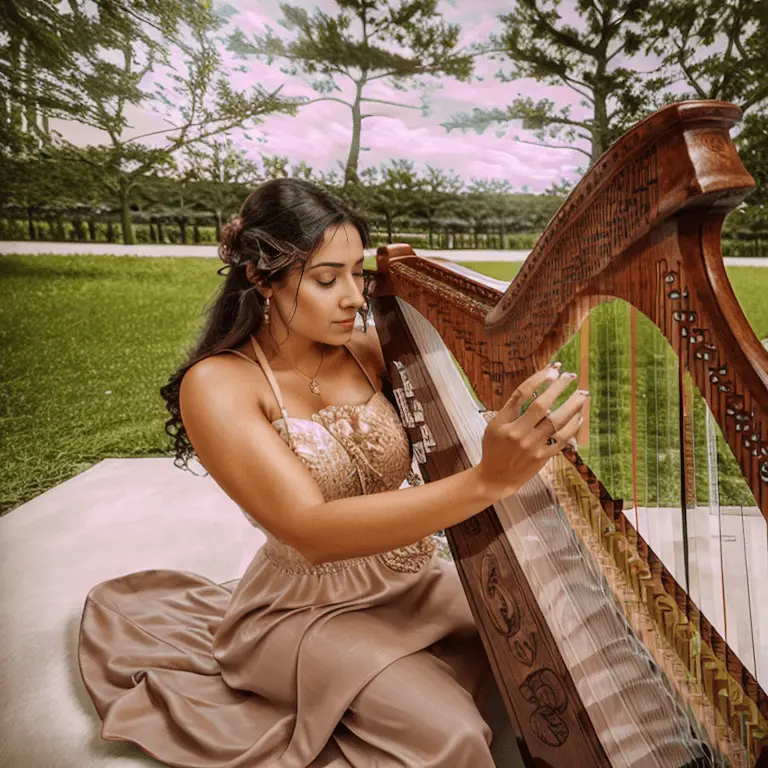Musical Instruments That Start With c

In this blog post, we will explore all the musical instruments that start with the letter C.
From the cabasa to the electric cello, I’ve got you covered on all the different types of musical instruments beginning with c. So sit back and get ready to learn about the diverse range of instruments that make up the world of music.
Cabasa
The cabasa is a percussion instrument that originated in West Africa. It is made of a cylinder with metal beads strung on a wire and is played by shaking or rubbing the beads against the cylinder.
Cajón
The cajón is a box drum that originated in Peru. It is played by striking the front or rear faces with the hands and is an idiophone instrument.
Calliope
The calliope is a wind instrument that is played by pressing keys that admit air into the tubes of the instrument. It is known for its high-pitched sound and is often associated with carnivals and circuses in Western Europe and North America.
Candombechico repique piano
The candombechico repique piano is a percussion instrument from Uruguay that is similar to a conga drum. It is a membranophone instrument.
Carillon
The carillon is a pitched percussion instrument consisting of a set of bells that are struck with a keyboard. It originated in the Low Countries.
Carimba
The carimba is a stringed instrument from Mexico. It is a chordophone instrument.
Castanets
Castanets are small, handheld percussion instruments that are played by clicking them together. They are associated with Spanish music and dance and are idiophones.
Castrato
A castrato is a male singer who has undergone castration before puberty in order to retain a high vocal range. They are known for their vocal registers in the human voice.
Cavaquinho
The cavaquinho is a small, four-stringed instrument from Portugal that is similar to a ukulele. It is a chordophone instrument.
Caxirola
The caxirola is a percussion instrument from Brazil that is similar to a maraca. It is an idiophone instrument.
Caxixi
The caxixi is a basket-shaped idiophone instrument from West Africa and Brazil that is played by shaking or hitting it with a stick.
Celesta
The celesta is a keyboard instrument that produces a bell-like sound by striking metal bars with hammers activated by a keyboard.
Cello (violoncello)Cello da spalla
The cello, also known as the violoncello, is a bowed stringed instrument that is a member of the violin family. It is a chordophone instrument.
Electric cello
The electric cello is a variation of the cello that uses an electric pickup to amplify the sound.
Chalumeau
The chalumeau is a reed instrument from France that is similar to a clarinet. It is an aerophone instrument.
Chácaras
The chácaras are idiophone percussion instruments from the Canary Islands that are similar to cymbals.
Chapman stick
The Chapman stick is a stringed instrument played by tapping or hammering the strings with the fingers. It was invented in the US.
Chenda
The chenda, also known as the chande or uruttu chenda, is a percussion instrument from India that is similar to a drum. It is a membranophone instrument.
Chitarra battente
The chitarra battente is a stringed instrument from Italy that is similar to a guitar. It is a chordophone instrument.
Chitarra Italiana
The chitarra Italiana is a similar chordophone stringed instrument.
Choghur
The choghur is a chordophone stringed instrument from Azerbaijan.
CimbalomElectric cymbalum
The cimbalom is a large, hammered stringed instrument from Central and Eastern Europe that is similar to a dulcimer. It is a chordophone instrument.
Cimbasso
The cimbasso is a brass aerophone instrument from Italy that is similar to a trombone.
Cimboa
The cimboa is a chordophone stringed instrument from Cape Verde that is similar to a lute.
Citole
The citole is a chordophone stringed instrument from Western Europe that is similar to a cittern.
Cittern
The cittern is a plucked chordophone stringed instrument that originated in England, Scotland, and Switzerland. It is similar to a mandolin.
Clapstick
Clapsticks are idiophone percussion instruments from Australia that consist of two wooden sticks that are struck together. They are also known as clave sticks.
ClarinetsPiccolo clarinet in A♭ (or G)
Clarinets are reed instruments that are played by blowing air through a single reed attached to a mouthpiece. They are aerophones and originated in Germany.
There are many types of clarinets, including the piccolo clarinet in A♭ or G, sopranino clarinet in E♭ or D, soprano clarinet in B♭ or A (also C, low G), basset clarinet in A, clarinette d’amour in G, basset horn in F, alto clarinet in E♭, bass clarinet, contra-alto clarinet, contrabass clarinet, octocontra-alto clarinet, and octocontrabass clarinet.
Clarytone
The Clarytone is an aerophone instrument from South Africa that is a type of fipple flute, similar to a tin whistle.
Claves
One of the most interesting instruments that start with C is the Claves. It is an idiophone percussion instrument from Australia that consists of two wooden sticks that are struck together. They are also known as clave sticks.
Clavichord
The clavichord is a stringed instrument from Western Europe that is played by pressing keys that cause a metal tangent to strike the strings. It is a chordophone instrument.
Clavinet
The Clavinet is a stringed instrument from the USA that is played by pressing keys that cause hammers to strike the strings. It is a chordophone instrument.
ConcertinaChemnitzer concertina
The Chemnitzer concertina is a type of free-reed instrument that belongs to the family of accordions. It is commonly found in Europe and is played by pressing buttons on the instrument to produce sound.
Conch
A conch is a type of trumpet that is made from a large, spiral-shaped seashell. It is classified as an aerophone, which is a type of musical instrument that produces sound by vibrating air.
Concherasmandolinos de concheros or mandolina conchera
Concheras are stringed instruments that are native to Mexico and belong to the family of chordophones. They include the mandolina conchera (a type of mandolin), the vihuela conchera (a type of Mexican vihuela), and the guitarra conchera (a type of guitar).
Conga (Tumbadora)ricardo (smallest) requinto quinto conga tumba supertumba (largest)
The conga (also known as a tumbadora) is a type of drum that belongs to the family of membranophones. It is commonly found in the Caribbean and comes in several sizes, ranging from the smallest (ricardo) to the largest (supertumba).
Contraguitar
The contraguitar is a type of stringed instrument that is similar to a guitar. It is classified as a chordophone, which is a type of musical instrument that produces sound through the vibrations of strings. The contraguitar is typically larger and has a longer neck than a standard guitar, with a range of six or seven strings.
It is played by plucking or strumming the strings with the fingers or a pick. The contraguitar has a rich, resonant sound and is used in a variety of musical styles, including classical, jazz, and folk.
Cornamuse
The cornamuse is a type of reed instrument that belongs to the family of aerophones. It is commonly found in Europe and is similar to the oboe in sound and construction. The cornamuse has a narrow, conical bore and a double reed at the top, which vibrates to produce sound when the player blows into the instrument.
It has a range of about two octaves and is played using a system of keys or buttons to control the pitch. The cornamuse has a bright, clear sound and is used in a variety of musical styles, including classical, folk, and pop.
CornetSoprano cornet
The cornet is a type of brass instrument that belongs to the family of aerophones. It originated in France and is similar to the trumpet in sound and construction, but has a conical bore and a more compact shape.
The cornet is played by buzzing the lips into a cup-shaped mouthpiece and pressing buttons or keys to control the pitch. It has a range of about three octaves and is used in a variety of musical styles, including classical, jazz, and pop.
The soprano cornet is a smaller, higher-pitched version of the cornet. It has a similar construction and playing technique, but produces a higher, brighter sound. The soprano cornet is used in brass bands and other ensembles to add clarity and brightness to the ensemble sound.
Cornett
The cornett is a type of trumpet that belongs to the family of aerophones. It is commonly found in Northern Europe and is made of wood or brass with a cup-shaped mouthpiece. It produces a distinctive, bright sound and was widely used in Renaissance and Baroque music.
Cornu
The cornu is a type of brass instrument that belongs to the family of aerophones. It originated in ancient Rome and is shaped like a horn with a conical bore and a flared bell. It produces a loud, powerful sound and was used in military and religious music.
Corrugaphone
The corrugaphone is a type of noise maker that produces sound through the vibrations of a flexible, corrugated surface.
Countertenor
The countertenor is a vocal register that lies above the tenor and below the alto. It is typically produced by male singers and is characterized by a high, light, and flexible voice.
Cowbell
The cowbell is a type of unpitched percussion instrument that belongs to the family of idiophones. It is commonly associated with Swiss folk music and is played by striking the bell with a stick or mallet.
Cromorne
The cromorne is a type of reed instrument that belongs to the family of aerophones. It originated in France and is similar to the oboe in sound and construction, but has a flared bell and a double reed.
Crotales
Crotales are a type of pitched percussion instrument that belong to the family of idiophones. They are small, metal discs with raised ridges or bars that produce a ringing, metallic sound when struck with a mallet.
Crumhorn
The crumhorn is a type of reed instrument that belongs to the family of aerophones. It originated in Western Europe and is shaped like a curved horn with a double reed at the top and a flared bell at the bottom. It produces a distinctive, woody sound and was widely used in Renaissance and Baroque music.
Crwth (Crowd)
The crwth (also known as a crowd) is a type of stringed instrument that belongs to the family of chordophones. It originated in Wales and has a rounded body with a flat, circular soundboard and four or five strings that are played with a bow. It produces a soft, mellow sound and was used in Welsh folk music.
Crystallophone
A crystallophone is a type of musical instrument that produces sound through the vibrations of a crystal.
Cuatro
The cuatro is a type of stringed instrument that belongs to the family of chordophones. It is commonly found in Latin America and has a small, pear-shaped body with four strings that are played with a pick. It produces a bright, twangy sound and is used in a variety of musical styles, including folk, pop, and classical.
Cuíca
The cuíca is a type of percussion instrument that belongs to the family of membranophones. It originated in Brazil and is shaped like a drum with a narrow, conical body and a single, tight head. It produces a variety of sounds by rubbing a wet cloth or stick on the head or by striking the head with a drumstick.
Culoepuya
The culoepuya is a type of drum that belongs to the family of membranophones. It is commonly found in Venezuela and is played with sticks or hands to produce a variety of rhythmic patterns. It has a narrow, cylindrical body with a single head that is made of animal skin or synthetic material. The pitch of the drum can be varied by adjusting the tension of the head.
Cümbüş
The cümbüş is a type of stringed instrument that belongs to the family of chordophones. It is commonly found in Turkey and has a small, pear-shaped body with a long neck and four strings that are played with a pick. It produces a bright, twangy sound and is used in a variety of musical styles, including folk, pop, and classical. The cümbüş is related to other stringed instruments such as the mandolin and the banjo.
Cymbal
The cymbal is a type of unpitched percussion instrument that belongs to the family of idiophones. It is commonly associated with Romania and is made of metal, typically brass or bronze. It is played by striking the two cymbals together or by suspending them from stands and striking them with drumsticks or mallets.
Cymbals produce a bright, ringing sound that can vary in intensity and timbre depending on their size, shape, and material. They are used in a wide range of musical styles, including classical, jazz, rock, and pop.
Conclusion
I hope you enjoyed learning about all the musical instruments that start with the letter C. From the traditional Cabasa and Cajón to the modern Electric Cello and Chapman stick, the letter C is home to a wide variety of instruments that contribute to the rich tapestry of music.
Whether you are a musician looking to add to your arsenal or simply a music lover looking to expand your knowledge, I hope this blog post has provided you with valuable information on the diverse range of instruments that make up the world of music. So, let’s keep exploring and learning more about the wonderful world of music!
You can explore more of this series by checking out my next post on instruments that start with the letter d.
References:
https://commons.wikimedia.org/wiki/File:Cajon_musician.jpg
From the bustling city of Mumbai, I am a professional Composer, Producer, and Educator with a wealth of expertise in the industry. With over 15 years of experience and a diverse portfolio including composing for movies, television, web series, songwriting, music production, and creating meditation music. I also love to teach music and musicality to students worldwide. When I’m not in the studio, you can find me doing music consultancy for independent projects and exploring the intersection of Space & Spirituality.

